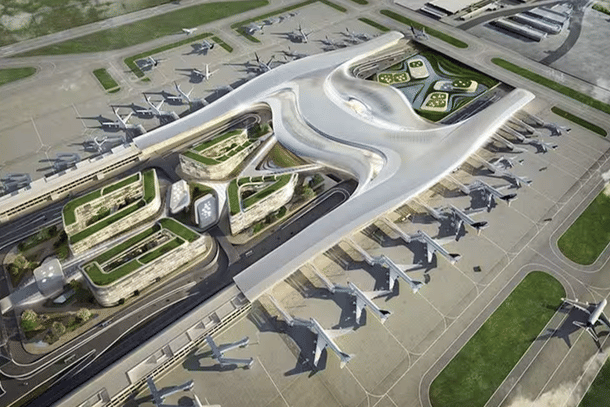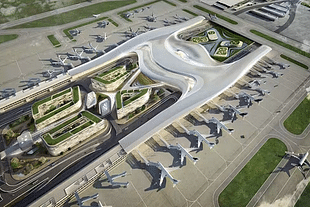Infrastructure
Navi Mumbai International Airport Set To Begin Operations In August 2024
V Bhagya Subhashini
Jul 25, 2023, 09:48 AM | Updated 10:50 AM IST
Save & read from anywhere!
Bookmark stories for easy access on any device or the Swarajya app.


The Deputy Chief Minister of Maharashtra, Devendra Fadnavis, has announced that the Navi Mumbai airport is set to become operational next year.
Fadnavis stated that planes are expected to start taking off from the airport in August 2024. He made this announcement in response to concerns raised by Ashok Chavan and other members of the Congress party regarding the condition of airports in the state.
Unfortunately, the construction of the airports in Nanded and Latur has faced setbacks as the assigned company has failed to make the necessary payments. As a result, work on these airports has come to a halt.
Fadnavis reassured that the Navi Mumbai airport project will continue to progress, and the issues with the Nanded and Latur airports will be promptly addressed with the involvement of the Advocate General's opinion, reports Financial Express.
In addition, Fadnavis revealed plans to establish a dedicated authority for efficient airport management. A decision regarding this matter is expected to be reached within the next three months. Furthermore, the government is investing in the construction of a new terminal building worth Rs 650 crore at the Shirdi airport.
These initiatives in Maharashtra aim to improve air connectivity and infrastructure, which will contribute to the overall growth and development of the state.
Navi Mumbai airport
The Navi Mumbai airport, scheduled to be completed in four phases, is designed to be a multi-modal facility. By 2032, it will have the capacity to accommodate 90 million passengers.
With a set of two cross runways, the existing Chhatrapati Shivaji Maharaj International Airport (CSMIA) at its peak handled 4.8 crore passengers per annum before Covid struck in March 2020.
NMIA, which will be the second airport in Mumbai Metropolitan Region (MMR), will address the capacity constraints at Chhatrapati Shivaji Maharaj International Airport.
The airport's strategic location will provide seamless connectivity to various transportation systems, including the Mumbai Trans Harbour Link, coastal road, and metro network. This integrated approach ensures efficient access and smooth travel for passengers using different modes of transportation to and from the airport.
The new airport would shake up the demand-supply dynamics by adding 40 per cent more passenger handling capacity overnight to the MMR region.
Conceived in 1999, the work of Navi Mumbai Airport started in 2017.
The project is being implemented by Navi Mumbai International Airport Limited (NMIAL), which is a special purpose vehicle (SPV) with equity participation of Adani Airport Holdings Limited (AAHL), a wholly-owned subsidiary of Adani Enterprises Limited and CIDCO (City and Industrial Development Corporation), in 74:26 ratio.
The airport will also feature a dedicated terminal for low-cost carriers, capable of handling up to two million passengers annually. With its innovative design and forward-thinking approach, this airport is set to redefine air travel in the region and beyond.
Navi Mumbai International Airport's terminal design
The Navi Mumbai International Airport's terminal design draws inspiration from the lotus flower, a symbol of the nation. The visually striking and aesthetically pleasing structure, created by Zaha Hadid Architects, a renowned British design and architecture firm, features three interconnected state-of-the-art terminal buildings, all showcasing a unique Lotus-shaped aesthetic theme.
The Navi Mumbai International Airport is an impressive structure, boasting a vast apron area covering 720,000 square feet and a spacious terminal area spanning 180,000 square feet. It also offers ample parking space to accommodate ten code C aircraft.
Spanning an area of 1,160 acres, the airport project comes with a total estimated cost of Rs 16,700 crore. It will be equipped with two runways positioned 1.55 kilometre apart from each other.
V Bhagya Subhashini is a staff writer at Swarajya. She tracks infrastructure developments.





